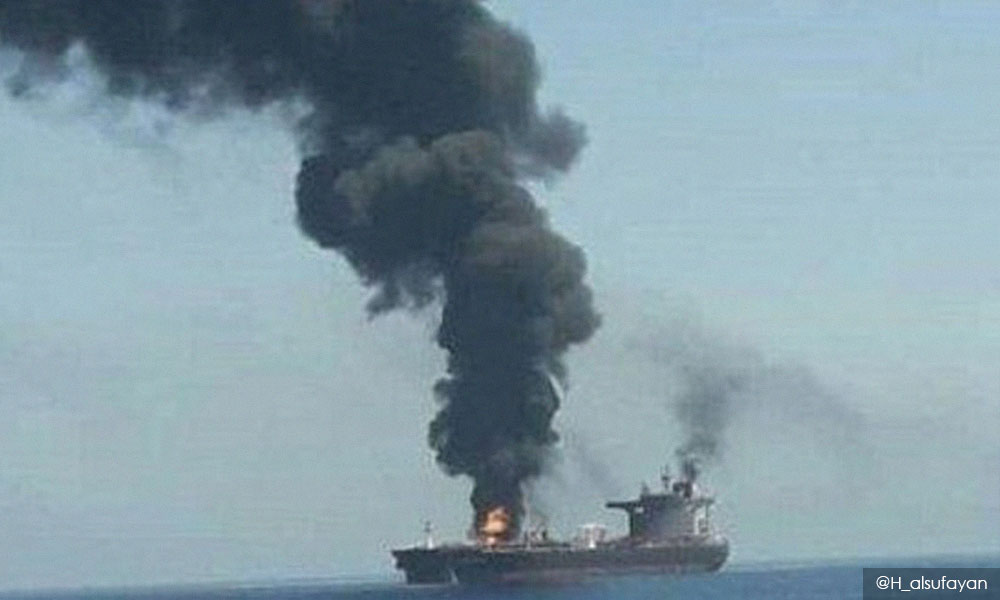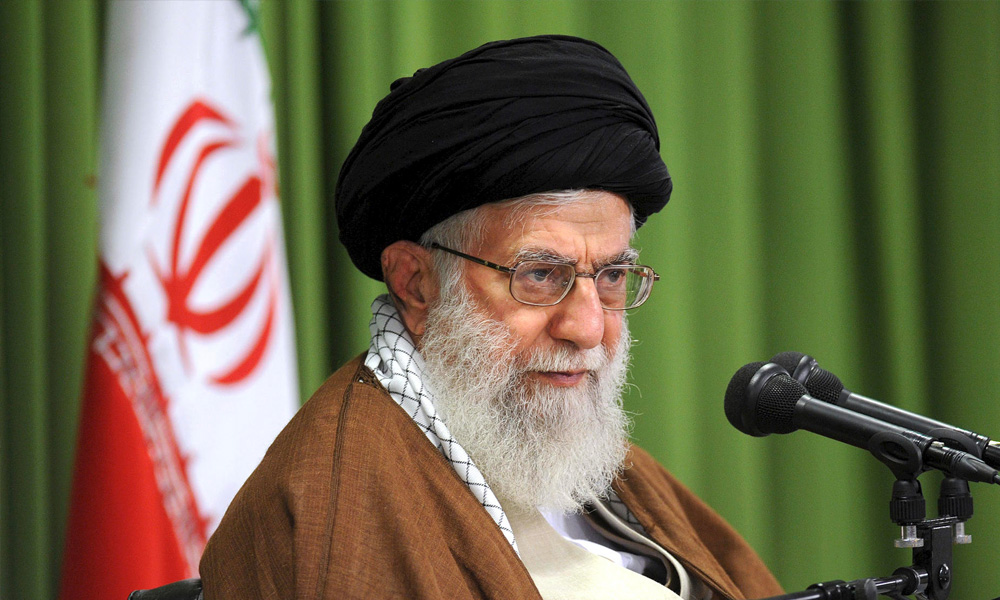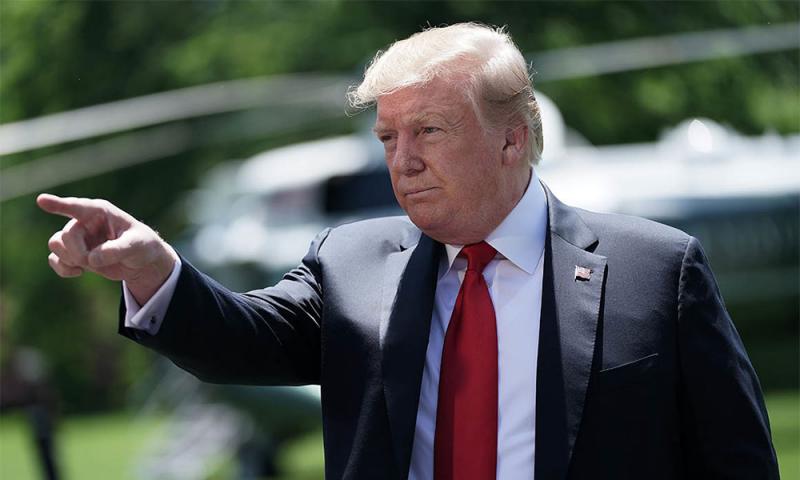Trump says 'Iran did do it,' as fears mount over confrontation
The United States on Friday blamed Iran for attacks on two oil tankers at the entrance to the Gulf and said it was seeking international consensus about the threat to shipping, despite Tehran denying involvement in the explosions at sea.
Thursday’s attacks raised fears of a confrontation in the vital oil shipping route at a time of increased tension between Iran and the US over US sanctions and military moves in the Middle East, Tehran’s proxy groups in the region and its nuclear programme.
“Iran did do it and you know they did it because you saw the boat,” US President Donald Trump told Fox News.
He was referring to a video released on Thursday by the US military which said it showed Iran’s Revolutionary Guards were behind the blasts that struck the Norwegian-owned Front Altair and the Japanese-owned Kokuka Courageous in the Gulf of Oman, at the mouth of the Gulf.
Iran said the video proved nothing and that it was being made into a scapegoat. “These accusations are alarming,” Foreign Ministry spokesman Abbas Mousavi said.
Iran has dismissed earlier US charges that it was behind the attacks and has accused the US and its regional allies such as Saudi Arabia and the United Arab Emirates of “warmongering” by making accusations against it.
Last month, the US sharply tightened economic sanctions that are damaging the economy of Iran, which in response has threatened to step up its nuclear activity. Tehran has said it could block the Strait of Hormuz, the main route out for Middle Eastern oil, if its own exports were halted.
Trump, who last year pulled the US out of an agreement between world powers and Tehran to curb Iran’s nuclear programme in exchange for some sanctions relief, said any move to close the Strait of Hormuz would not last long but added that he was open to negotiations with Iran.

Iran has repeatedly said it will not re-enter talks with the US unless it reverses Trump’s decision to withdraw from the 2015 nuclear deal.
Tehran and Washington have both said they have no interest in starting a war. But this has done little to assuage concerns that the two arch foes could stumble into a conflict.
A US official told Reuters on Friday a surface-to-air missile was fired from Iranian territory on Thursday morning at a US drone that was near Front Altair following the attack on the tanker. The missile did not hit the drone, the official said.
Trump's administration is focused on building international consensus following the attacks, US Defence Secretary Patrick Shanahan said.
Asked whether he was considering sending more troops or military capabilities to the Middle East, Shanahan said: “As you know, we’re always planning various contingencies.”
But he emphasised the issue of building consensus.
“When you look at the situation, a Norwegian ship, a Japanese ship, the Kingdom of Saudi Arabia, the UAE, 15 percent of the world’s oil flows through the Strait of Hormuz,” he said.
“So we obviously need to make contingency plans should the situation deteriorate. We also need to broaden our support for this international situation,” he told reporters.
Oil prices rose about one percent on Friday, reflecting the jitters. Insurance costs for ships sailing through the Middle East have jumped by at least 10 percent after the attacks, ship insurers said.
The tanker attacks took place while Prime Minister Shinzo Abe of Japan - a big buyer of Iranian oil until it was forced by the new US sanctions to stop - was visiting Tehran on a peacemaking mission, bringing a message from Trump.

Iran dismissed Trump’s message, details of which were not made public.
“I do not see Trump as worthy of any message exchange, and I do not have any reply for him, now or in future,” Iranian Supreme Leader Ali Khamenei (photo) said.
Washington has also blamed Iran or its proxies for attacks on May 12 that crippled four oil tankers in the same area, and has said Tehran was behind May 14 drone strikes on two Saudi oil-pumping stations. Tehran has denied all those charges.
The US military said black-and-white footage it filmed from a US aircraft showed Iran’s Guards on a patrol boat drawing up to the Kokuka Courageous and removing an unexploded limpet mine from its hull.
The Japanese-owned tanker, abandoned by its crew, was being towed to a port in the United Arab Emirates on Friday, after a Dutch firm said it had been appointed to salvage the ships.
The second tanker, the Front Altair, which was set ablaze by a blast, was still languishing at sea, although the fire that had charred the hull had been put out.
Iranian military fast-boats in the Gulf of Oman were preventing two privately owned tug boats from towing away the Front Altair, a US official said on Friday.
Iran’s crude exports fell to about 400,000 barrels per day (bpd) in May, starving Iran’s economy of its main source of revenue.
Iran says it is still abiding by the terms of the nuclear deal, but cannot do so indefinitely unless it receives some of the economic benefits that were promised.
There have been conflicting accounts of the cause of Thursday’s blasts. An initial report that Kokuka Courageous was struck by a torpedo was dismissed by a source familiar with the issue. The owner of the tanker, which carried methanol, later said it was hit by two “flying objects”.
Iranian TV showed 23 crew in Iran believed to be from Front Altair on Friday, and said its experts would assess whether they could return to the ship. The crew from Kokuka Courageous were picked up and handed to a US Navy ship on Thursday.
- Reuters
RM12.50 / month
- Unlimited access to award-winning journalism
- Comment and share your opinions on all our articles
- Gift interesting stories to your friends
- Tax deductable

 Reuters
Reuters